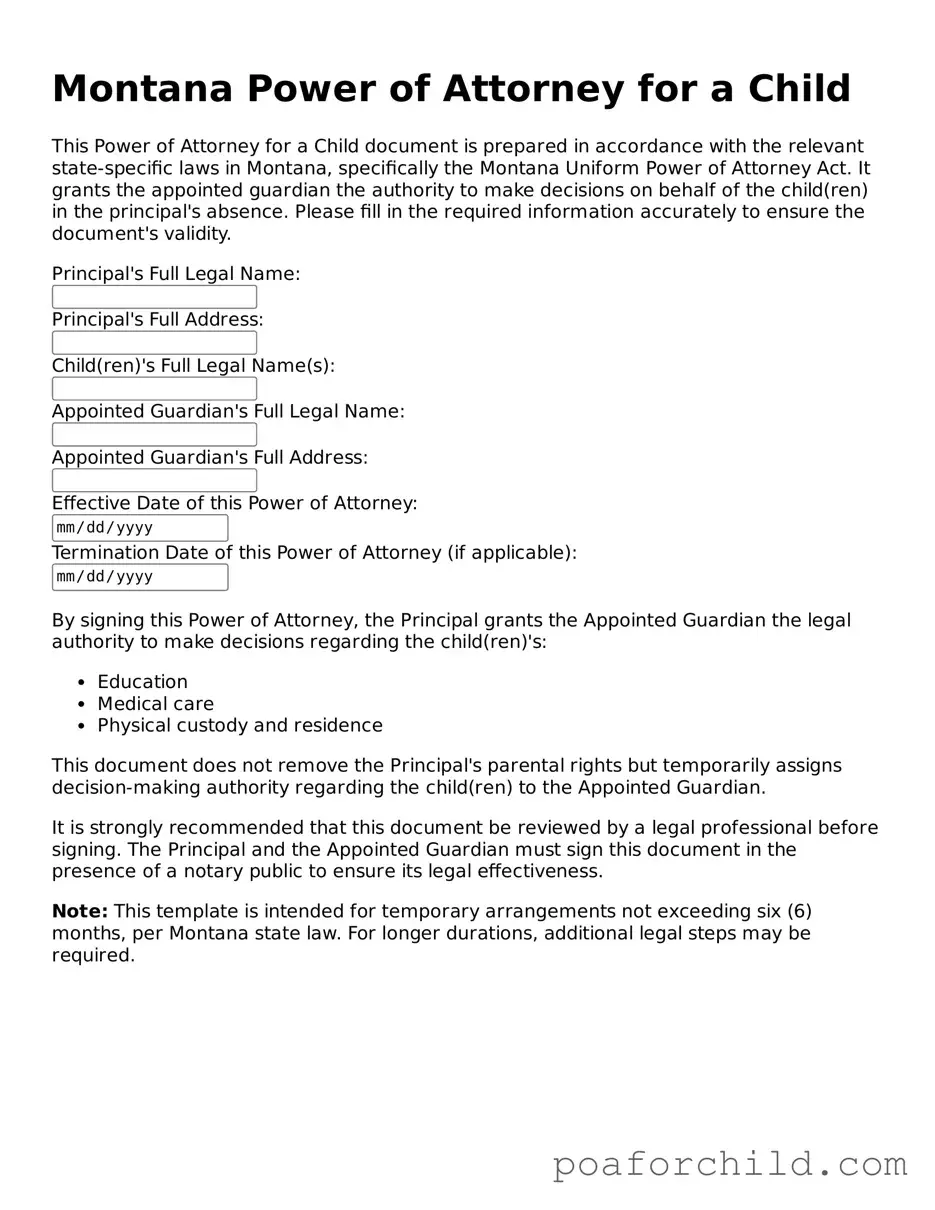Detailed Guide for Using Montana Power of Attorney for a Child
Assigning power of attorney for a child is a significant decision. It temporarily grants another individual the authority to make decisions on behalf of your child, covering areas such as healthcare, education, and general welfare. This could be necessary for various reasons, including but not limited to, the primary caregiver's prolonged absence due to work, health issues, or military service. The process in Montana involves filling out a specific form. Follow these steps to correctly complete the Montana Power of Attorney for a Child form, ensuring your child’s needs can continue to be met in your absence.
- Start by entering the current date at the top of the form.
- Write the full legal names of the child or children involved in the spaces provided. If more than one child is included, make sure to list each child’s name.
- Enter the full name(s) of the individual(s) you are granting power of attorney to, referred to as the attorney(s)-in-fact.
- Detail the specific powers you are transferring. Include powers related to healthcare decisions, educational matters, and permission to travel, among others.
- Specify the time frame for which this power of attorney will be valid. Montana law may limit the duration, so ensure you are compliant with these limits.
- Underneath the powers section, some forms may require you to list any special instructions or limitations to the powers granted. If applicable, fill out this section with any important details or restrictions.
- Both you (the principal) and the attorney(s)-in-fact need to provide signatures. Sign the form in the presence of a notary public to legalize the transfer of authority. Some forms may also have spaces for witness signatures, so review your form carefully.
- Lastly, ensure the notary public signs and seals the form, affirming that all signatures were willingly given and the identities of all parties were verified.
After completing these steps, the form is ready to be used. It's wise to make copies for your records and to provide a copy to the appointed attorney(s)-in-fact. Depending on the situation, you might need to distribute copies to other relevant parties such as your child’s school or healthcare provider. Remember, this document can be revoked at any time by you, provided you communicate this revocation in writing to all interested parties.
